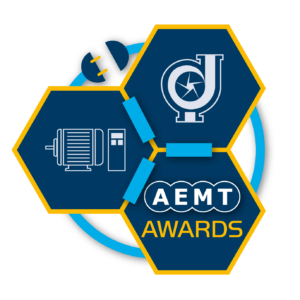Hydraulic Institute Works with DOE to Shape Future Energy Efficiency Initiatives for Pump Industry
PARSIPPANY, NJ — As the largest association of pump producers in North America, the Hydraulic Institute (HI) has renewed its commitment to the Department of Energy (DOE) to raise awareness of new methods for increasing energy efficiency among manufacturers, purchasers and users of pumps and pumping systems.
HI representatives recently attended a DOE-sponsored “Allied Partner Workshop” in Washington, D.C., where the Institute and DOE shared ideas for future efforts. HI also was commended for its outreach initiatives that tie in to promoting energy conservation among end-users of pumps and pumping systems.
“HI has successfully collaborated with the DOE’s Office of Energy Efficiency and Renewable Energy (EERE) on numerous projects since 1993 when it joined the Motor Challenge Program as a charter member,” explained Robert Asdal, executive director of HI. HI became an Allied Partner with the DOE in 2001. “We are proud to continue our partnership with the DOE and to work on projects that will make energy efficiency more than a widely accepted business strategy, but actually the industry norm,” said Asdal.
HI Energy-Saving Initiatives
Among the Institute’s efforts is the highly acclaimed “Pump Life Cycle Costs: A Guide to LCC Analysis for Pumps and Pumping Systems,” developed and published by HI and Europump with the support of the DOE. In 2001, more than 1,000 hard copies of this guide were distributed, with a downloadable Executive Summary version also made available on the HI web site. According to Asdal, DOE representatives were impressed to learn that since its introduction, more than 10,000 copies of the free LCC Guide’s Executive Summary have been downloaded from the HI web site alone.
A highlight of the HI web site continues to be the extensive Energy Savings section, featuring many downloadable DOE tools, resources, software and case studies. Here, HI has helped promote the DOE’s MotorMaster+ and the Pumping System Assessment Tool (PSAT) as well as information on Best Practices and web links to Allied Partnerships.
HI has encouraged it members to become Allied Partners, with several pump companies regularly participating in DOE sponsored events and activities. In fact, two HI member organizations have committed to energy efficiency by holding in-house sessions of the PSAT “Qualified Specialist” training at their facilities. Through these sessions, engineers and facility operators are learning how to accurately assess the operating efficiency of their pumping systems.
HI will also be sponsoring a Life Cycle Cost Workshop in conjunction with the Pumps & Systems Expo on October 22, 2002, in Ft. Washington, Pa. During the same workshop, HI and the U.S. DOE plan to offer an overview of the Pump System Assessment Tool (PSAT).
The 85-year old Hydraulic Institute, the largest association of pump producers in North America, serves member companies and pump users by providing product standards, and forums for the exchange of industry information. For more information on the Hydraulic Institute and its line of products available through the e-store, services, standards, publications and meetings, visit the HI web site at www.pumps.org. Requests may also be faxed to (973) 267-9055 or mailed to Hydraulic Institute, 9 Sylvan Way, Parsippany, NJ 07054. Visitors to the HI web site are invited to sign the HI Guest Book for future notices of new standards, on-going energy savings tips and updates on educational offerings, including a forthcoming e-learning program on “Centrifugal Pumps: Fundamentals in Design and Application.”
Source:Hydraulic Institute Inc.







